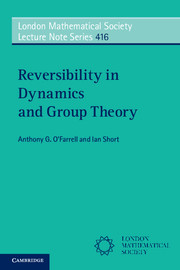Book contents
- Frontmatter
- Contents
- Preface
- 1 Origins
- 2 Basic ideas
- 3 Finite groups
- 4 The classical groups
- 5 Compact groups
- 6 Isometry groups
- 7 Groups of integer matrices
- 8 Real homeomorphisms
- 9 Circle homeomorphisms
- 10 Formal power series
- 11 Real diffeomorphisms
- 12 Biholomorphic germs
- References
- List of frequently used symbols
- Index of names
- Subject index
4 - The classical groups
Published online by Cambridge University Press: 05 June 2015
- Frontmatter
- Contents
- Preface
- 1 Origins
- 2 Basic ideas
- 3 Finite groups
- 4 The classical groups
- 5 Compact groups
- 6 Isometry groups
- 7 Groups of integer matrices
- 8 Real homeomorphisms
- 9 Circle homeomorphisms
- 10 Formal power series
- 11 Real diffeomorphisms
- 12 Biholomorphic germs
- References
- List of frequently used symbols
- Index of names
- Subject index
Summary
The classical groups
Hermann Weyl [243] coined the phrase ‘classical groups’ to describe certain subgroups of general linear groups, and other groups derived from these subgroups, that preserve particular sesquilinear forms. We discuss the collection of all classical groups in this section, but only study reversibility in a selection of them.
Let V denote a finite-dimensional vector space over a commutative field F. The general linear group of V is the group of all invertible linear transformations of V. It is denoted GL(V). Let σ denote a field automorphism of F that is an involution. A sesquilinear form on V, relative to σ, is a map B from V × V to F such that for all vectors u, v, and w in V, and scalars λ and μ in F,
(i) B(λu + μv, w) = λB(u, w) + μB(v, w)
(ii) B(w, λu + μv) = σ(λ)B(w, u) + σ(μ)B(w, v).
If σ is the identity map, then B is said to be bilinear. The sesquilinear form B is nondegenerate if each of the conditions B(u, v) = 0 for all vectors v in V, or B(v, u) = 0 for all vectors v in V, imply that u = 0. A nondegenerate sesquilinear form B is reflexive if the equation B(u, v) = 0 implies that B(v, u) = 0.
A reflexive, nondegenerate sesquilinear form V is said to be
◦ alternating, if B is bilinear, and B(v, v) = 0 for each vector v in V
◦ Hermitian, if σ is of order 2, and is such that B(u, v) = σ(B(v, u)) for each pair of vectors u and v
◦ symmetric, if B is bilinear, and B(u, v) = B(v, u) for each pair of vectors u and v.
A famous theorem of Birkhoff and von Neumann [225, Theorem 7.1] says that each reflexive, nondegenerate sesquilinear form is either alternating, Hermitian, or symmetric. We define the isometry group of B, Isom(B), to be the subgroup of GL(V) consisting of those maps that preserve B. That is
Isom(B) = {g ∈ GL(V) : B(g(u), g(v)) = B(u, v) for each pair u and v in V}.
Information
- Type
- Chapter
- Information
- Reversibility in Dynamics and Group Theory , pp. 59 - 80Publisher: Cambridge University PressPrint publication year: 2015
